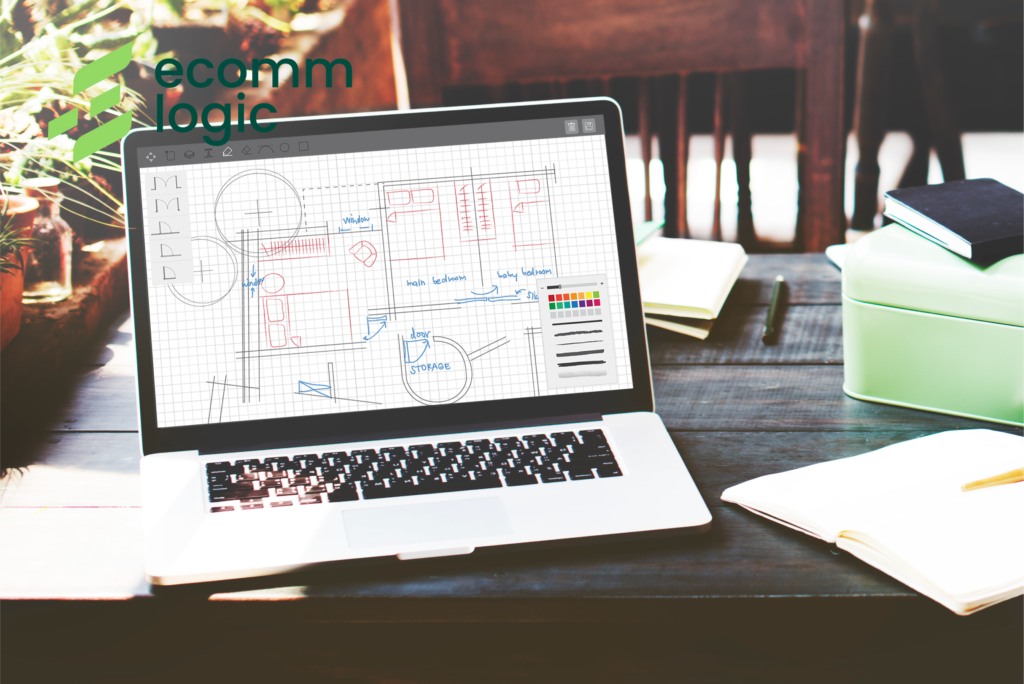User experience (UX) has become a top priority for websites in 2025 — and for good reason. If your website isn’t easy to use, your visitors will leave quickly, costing you traffic, leads, and sales. One of the most powerful tools to understand how users interact with your site is heatmaps. At EcommeLogic, we help businesses leverage data-driven tools like heatmaps to refine their digital strategies and optimize user journeys.
In this article, we’ll explore how heatmaps work, why they matter for UX, and how to use them to boost performance.

What Are Heatmaps?
A heatmap is a visual representation of where users engage most with your website. Using a color-coded scale, it shows which areas get the most attention — red and orange for high activity (hot zones), and blue or green for low activity (cold zones).
There are three main types of heatmaps:
- Click Heatmaps: Reveal where users are clicking.
- Scroll Heatmaps: Display the depth of a user’s page scroll.
- Hover Heatmaps: Indicate where users move or pause their mouse, offering insight into areas of interest.
These heatmaps help you understand what’s working, what’s being ignored, and what’s confusing for users.
Why Heatmaps Are Important for UX
Good UX means delivering a smooth, intuitive experience that helps users accomplish their goals quickly. Heatmaps give you the visual feedback you need to:
- Discover which elements users find engaging.
- Identify distractions or poorly placed content.
- Recognize how users engage with various page areas.
- Understand how users interact with different sections of a page.
This kind of insight is critical for optimizing landing pages, improving navigation, and increasing conversions.
How to Use Heatmaps to Improve UX
Here’s a step-by-step guide to using heatmaps effectively:
1. Pick Key Pages to Analyze
Start with pages that have high traffic or play a major role in conversions — such as:
- Homepage
- Product or service pages
- Blog posts with high bounce rates
- Checkout and form pages
These pages offer the most value from heatmap insights.
2. Set Up a Heatmap Tool
There are several reliable tools that offer heatmap tracking:
- Hotjar
- Crazy Egg
- Microsoft Clarity (free)
- Smartlook
Install your chosen tool via a script or plugin, and let it run for a few days to collect meaningful data.
3. Review the Data
After gathering the data, search for important trends:
- Are users clicking on non-clickable images or headings?
- Is your CTA visible and getting engagement?
- Do users scroll past important content?
For example, if users never scroll beyond 50% of your homepage, it means content placed below that point might be going unnoticed.
4. Make Strategic Changes
Use these insights to:
- Move important CTAs and offers into hotter areas.
- Improve clarity and structure of your content layout.
- Fix distractions that take attention away from conversion goals.
- Reposition forms, images, or buttons based on actual user behavior.
5. Test and Optimize Continuously
After you’ve made adjustments, evaluate the modifications using A/B testing to see which version works best. Continue reviewing heatmaps monthly to keep optimizing. UX is a continuous process rather than a one-time solution.

Real-World Example
At EcommeLogic, one of our e-commerce clients had a product page with high impressions but poor conversion. Using heatmaps, we found that users were hovering over product images but rarely scrolling down to see the “Add to Cart” button, which was too low on the page. After repositioning the button and improving contrast, the conversion rate jumped by 27% in just two weeks.
This is the power of heatmaps — small design changes backed by real user data can deliver measurable business results.
Final Thoughts
Heatmaps are essential for anyone serious about improving website UX. They offer visual, actionable insights that no traditional analytics tool can provide. When used correctly, they help eliminate guesswork and guide design decisions that truly matter to users.
Whether you’re running an e-commerce store, a SaaS platform, or a lead generation website, understanding how people interact with your content is key to growth. At EcommeLogic, we help you gather and analyze behavioral data — then turn it into a winning digital experience.
Want to see how heatmaps can improve your website?


